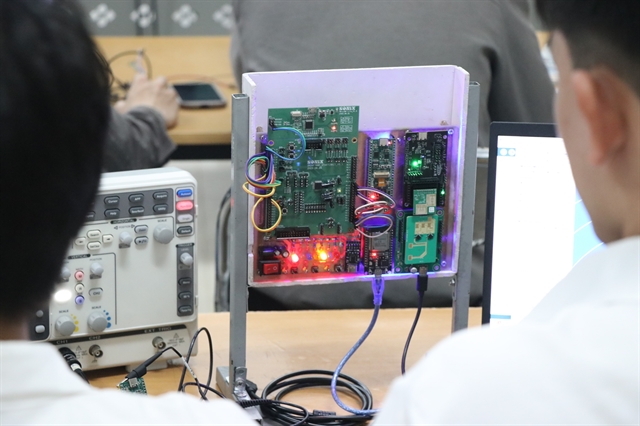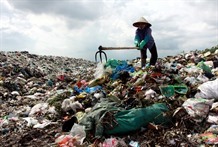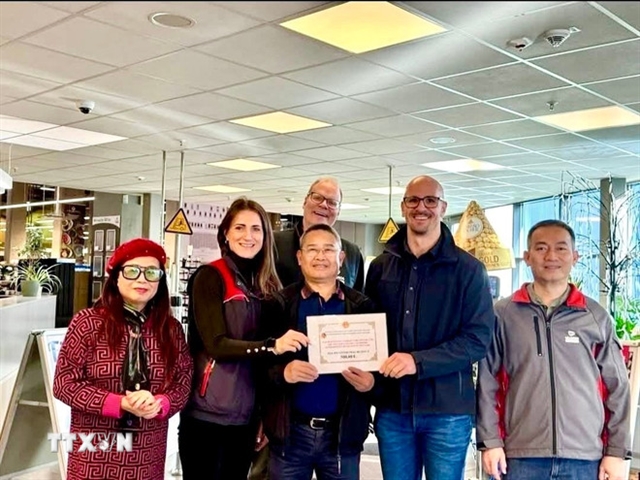 Society
Society

Many solutions have been proposed, solid garbage treatment in Việt Nam has not yet met the expectation.
 |
| An environmental service worker classifies garbage at a landfill in Thái Bình Province’s Vũ Hội Commune, some 120km southeast of Hà Nội. The large amount of garbage has caused environmental pollution, but no measures have been taken to solve the problem. — VNA/VNS Photo Thế Duyệt |
HÀ NỘI — In 2017, up to 38,000 tonnes of municipal waste is generated a day in Việt Nam and a lack of proper solutions to the waste problem is harming the urban environment.
A group of specialists, including Lê Hoàng Anh, Mạc Thị Minh Trà and Nguyễn Thị Bích Loan, from the Northern Centre for Environmental Monitoring Portal under the Việt Nam Environment Administration discovered municipal solid waste in the country increases 10 to 16 per cent each year.
Hà Nội, HCM City, Đà Nẵng and Hải Phòng account for 45.24 per cent of solid waste generated by urban areas.
Up to 70 per cent of municipal solid waste is household waste.
Plastic waste makes up 7 per cent of solid waste, about 2,400 tonnes a day.
Up to 95 per cent of plastic waste in Hà Nội, however, is buried. The percentage in HCM City is 76 per cent.
Although the percentage of collected waste has increased in recent years, it has still remained low due to the growing speed of waste generation, poor treatment capacity and low awareness of people, especially in rural areas.
Seventy six million tonnes of straw and 47 million tonnes of poultry litter are generated annually, of which up to 70 per cent is discharged directly into rivers and irrigation systems.
Industrial waste, construction waste and medical waste also require effective treatment to prevent pollution and diseases from spreading.
Waste sorting is considered a simple yet efficient solution for the country’s rapid solid waste generation rates.
Hà Nội, Đà Nẵng City and HCM City have piloted waste sorting projects recently.
From November 24 last year, HCM City authorities started enforcing regulations on garbage classifying, imposing a fine of up to VNĐ20 million (US$860) for each violation.
The Ministry of Construction has acknowledged five solid waste treatment technologies including two composting methods, refuse-derived fuel and two incineration methods.
Among 660 landfills in Việt Nam, only 203 dumps meet sanitation requirements.
Nguyễn Đức Quyền, lecture of the School of Heat Engineering and Refrigeration under Hà Nội University of Science and Technology, said waste treatment technology in Việt Nam is developed mostly by individuals and private companies.
Therefore, he recommended encouraging scientists and experts in this field to improve the efficiency of garbage collecting, sorting and treatment in Việt Nam.
HCM City and Hà Nội spend about VNĐ1.5 trillion ($64.5 million) a year on processing garbage, accounting for 3.5 per cent of the cities’ public budgets.
The cost for other provinces is estimated at to VNĐ40 billion ($1.72 million) a year.
The sanitary charge of VNĐ4,000 to 6,000 (17 - 25 cents), paid monthly to a local environment company, only covers 20 per cent of waste collecting and transporting expenses.
Therefore, pricing for municipal waste, especially household waste treatment, can both reduce garbage and increase investment in new technologies, experts recommended.
Nguyễn Thượng Hiền, head of Waste Management Administration stressed the importance of tightening monitoring mechanisms for garbage sorting and investing in efficient waste treatment technologies.
The Ministry of Natural Resources and Environment also plans to impose service charges on municipal waste treatment by 2025, initially in large cities. — VNS




